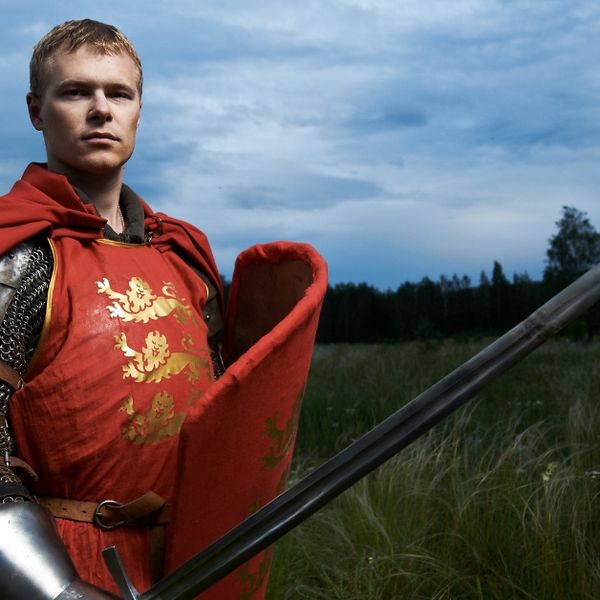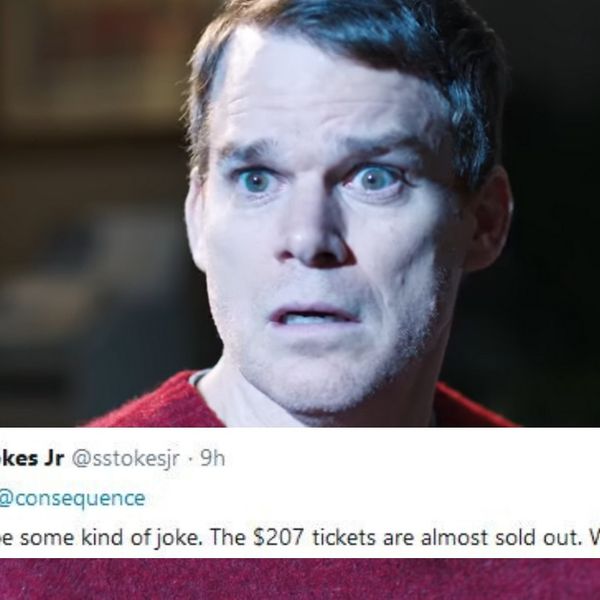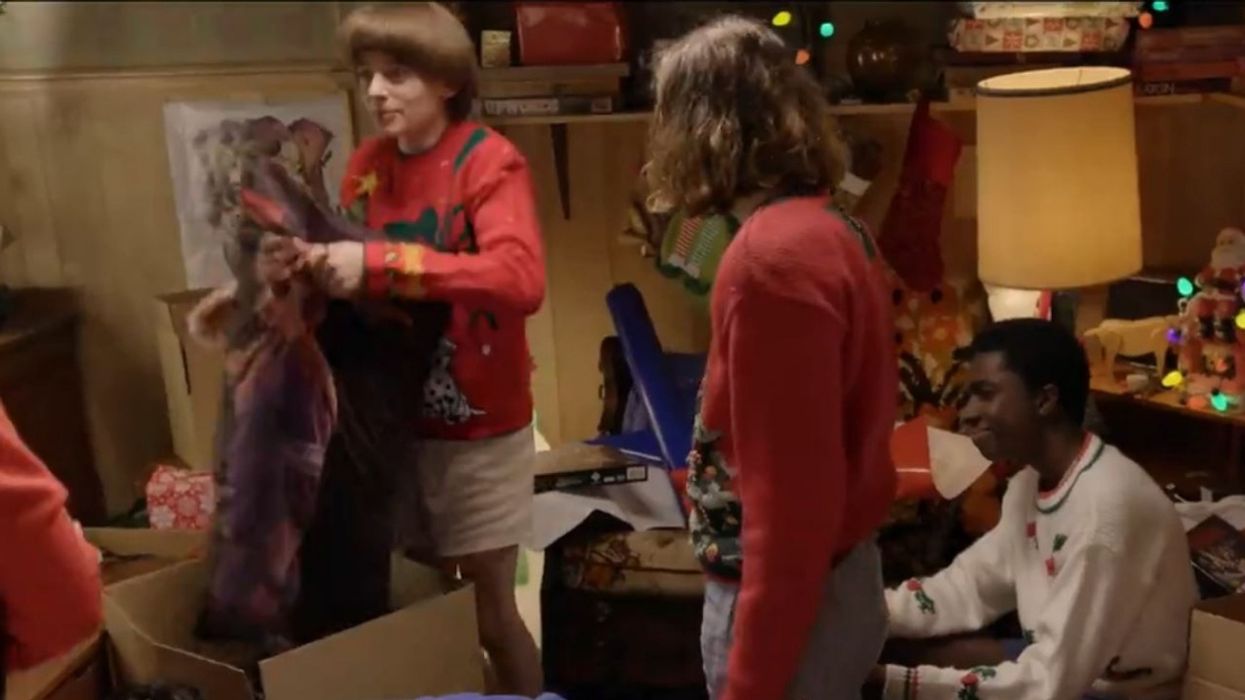September, 2004, LOS ANGELES - In this age of jet travel, time is shortened, work is intensified, and we cover many bases. We dash from one place to another on varying missions in a very full month. And as usual, September had me on quick trips to New York for a meeting and to Emeryville, California, for a voice-over job. But travel can also transport in time as well as to a place. Last month, I went back to my boyhood.
I traveled to a place called Rohwer in southeast Arkansas where I spent a part of my childhood years. It is a place of memories for me - memories that glow with a golden haze. I remember the lush bayous filled with strange sounds and creepy, crawly creatures. I remember catching pollywogs in a ditch and watching them miraculously sprout legs and eventually turn into frogs. I remember waking up one magical winter morning and discovering everything covered in white - cold, soft snow. I also remember the barbed wire fence that kept me confined in that camp. I traveled back to a time of innocence, a time when I was quite unaware of the devastation that had befallen my parents and 120,000 other Japanese Americans. It was World War II and our crime was that we just happened to "look like the enemy."
 A child is incredibly adaptable to the most abnormal of conditions. To me, the tall guard towers and the barbed wire fence that incarcerated my family and me became part of my normal landscape. What would be abnormal in normal times became my normality. It became normal for me to line up three times a day to eat in a noisy mess hall. It became normal for me to go with Daddy to a communal shower and bathe with many men. It became normal for me to go to school in a black, tarpaper-covered barrack. I learned to recite the Pledge of Allegiance to the flag within sight of armed sentries watching over us. I was too young to appreciate the irony as I recited the words, "with liberty and justice for all."
A child is incredibly adaptable to the most abnormal of conditions. To me, the tall guard towers and the barbed wire fence that incarcerated my family and me became part of my normal landscape. What would be abnormal in normal times became my normality. It became normal for me to line up three times a day to eat in a noisy mess hall. It became normal for me to go with Daddy to a communal shower and bathe with many men. It became normal for me to go to school in a black, tarpaper-covered barrack. I learned to recite the Pledge of Allegiance to the flag within sight of armed sentries watching over us. I was too young to appreciate the irony as I recited the words, "with liberty and justice for all."
The return to Arkansas was undeniably filled with many emotions - but this time with deeper understanding and an overpowering sense of uplift. The pilgrimage to Rohwer was on the final day of a richly enlightening week in Little Rock, Arkansas. A week-long series of programs called "Life Interrupted: The Japanese American Experience in World War II Arkansas" was being capped with a long bus caravan that rolled past mile after mile of ripening cotton fields to Camp Rohwer as well as to a second internment camp in Arkansas called Camp Jerome.
 The week was awe-inspiring. Over 1,300 people, many of them former internees with their children and grandchildren, had gathered in Little Rock from all over the nation. There were lawyers, educators, historians, politicians, and others from all walks of life. The Japanese American National Museum, working in partnership with the University of Arkansas at Little Rock opened eight exhibits in four different venues located throughout the city. The principal exhibits; "America's Concentration Camp" and "Against Their Will: The Japanese American Experience in WWII Arkansas" are in the Statehouse Convention Center. The stirring story of young Japanese Americans who went from unjust incarceration behind barbed wire fences to fight heroically for the United States are told by three deeply moving exhibits in the Douglas MacArthur Museum of Military History. A handsome and affecting art exhibit of the paintings of Henry Sugimoto, who was incarcerated in both of the two Arkansas camps, can be viewed at the Cox Arts Center and two exhibits on the arts and crafts in the internment camps are at the Fine Arts Building of the University of Arkansas at Little Rock.
The week was awe-inspiring. Over 1,300 people, many of them former internees with their children and grandchildren, had gathered in Little Rock from all over the nation. There were lawyers, educators, historians, politicians, and others from all walks of life. The Japanese American National Museum, working in partnership with the University of Arkansas at Little Rock opened eight exhibits in four different venues located throughout the city. The principal exhibits; "America's Concentration Camp" and "Against Their Will: The Japanese American Experience in WWII Arkansas" are in the Statehouse Convention Center. The stirring story of young Japanese Americans who went from unjust incarceration behind barbed wire fences to fight heroically for the United States are told by three deeply moving exhibits in the Douglas MacArthur Museum of Military History. A handsome and affecting art exhibit of the paintings of Henry Sugimoto, who was incarcerated in both of the two Arkansas camps, can be viewed at the Cox Arts Center and two exhibits on the arts and crafts in the internment camps are at the Fine Arts Building of the University of Arkansas at Little Rock.
Saturday was a one-day symposium composed of twenty-seven sessions with discussions that ranged from democracy to civil rights to military service to historic preservation. For me, the most daunting part of the day's program was the luncheon. President Bill Clinton, the former governor of Arkansas, was on the printed program as our luncheon keynote speaker. As we all knew by that time, his emergency heart surgery in New York had sidelined him from all public activities. I was asked to substitute for him - substitute for the silver tongued former President of the United States! The challenge was as awesome as the honor. I had to rise to the honor.
 I began by sharing the heartwarming joy I felt on meeting people I had not seen in decades and of people who remembered me as a little boy but that I - try as I might - could not. I talked of my fond memories of a boyhood in Rohwer. I talked of the stinging irony I felt on seeing the crumbling old monument in the cemetery at Rohwer - a memorial to Japanese American soldiers who went from internment camps to perish in a war fighting for democracy and are now buried at the site of their incarceration. I talked of an invitation I received in the year 2000 from President Clinton to the White House to witness the granting of nineteen medals of honor, the highest military recognition of the nation, to nineteen Japanese American veterans of World War II. Fifty-five years before, at the end of the war, these men had been recognized with the Distinguished Service Cross, the second-highest military honor, for their heroic deeds. However, after a review mandated by order of Congress in 1996, it was found that their acts of valor eminently merited the highest honor. Only wartime prejudice had reduced their tribute. Among these extraordinary members of the Greatest Generation receiving the Medal of Honor was the senior U.S. Senator from Hawaii, Senator Daniel Inouye, who lost his right arm on a bloody battlefield in Italy. These men and all the Japanese American veterans of World War II had transformed this nation. They made my America today a reality.
I began by sharing the heartwarming joy I felt on meeting people I had not seen in decades and of people who remembered me as a little boy but that I - try as I might - could not. I talked of my fond memories of a boyhood in Rohwer. I talked of the stinging irony I felt on seeing the crumbling old monument in the cemetery at Rohwer - a memorial to Japanese American soldiers who went from internment camps to perish in a war fighting for democracy and are now buried at the site of their incarceration. I talked of an invitation I received in the year 2000 from President Clinton to the White House to witness the granting of nineteen medals of honor, the highest military recognition of the nation, to nineteen Japanese American veterans of World War II. Fifty-five years before, at the end of the war, these men had been recognized with the Distinguished Service Cross, the second-highest military honor, for their heroic deeds. However, after a review mandated by order of Congress in 1996, it was found that their acts of valor eminently merited the highest honor. Only wartime prejudice had reduced their tribute. Among these extraordinary members of the Greatest Generation receiving the Medal of Honor was the senior U.S. Senator from Hawaii, Senator Daniel Inouye, who lost his right arm on a bloody battlefield in Italy. These men and all the Japanese American veterans of World War II had transformed this nation. They made my America today a reality.
 I talked of the challenges of our democratic ideals. It takes courageous, principled people to struggle to fulfill those ideals. Throughout the history of our nation, injustices were battled by the disenfranchised. African Americans struggled against slavery, then Jim Crow laws, and other discrimination to transform this nation. Women, who were denied any role in leadership, struggled to gain equality and justice and helped to transform this nation. In the history of the American southwest, Latinos had endured a host of injustices but still they struggled to fulfill the ideals of our nation. I talked that day in Little Rock about our democracy as a dynamic work-in-progress. All of us, the great diversity of this land, working in concert as Americans carry out the promise of our American ideals. When I finished, the audience rose up in a standing ovation. That week in Little Rock, Arkansas will forever be an unforgettable benchmark in my life.
I talked of the challenges of our democratic ideals. It takes courageous, principled people to struggle to fulfill those ideals. Throughout the history of our nation, injustices were battled by the disenfranchised. African Americans struggled against slavery, then Jim Crow laws, and other discrimination to transform this nation. Women, who were denied any role in leadership, struggled to gain equality and justice and helped to transform this nation. In the history of the American southwest, Latinos had endured a host of injustices but still they struggled to fulfill the ideals of our nation. I talked that day in Little Rock about our democracy as a dynamic work-in-progress. All of us, the great diversity of this land, working in concert as Americans carry out the promise of our American ideals. When I finished, the audience rose up in a standing ovation. That week in Little Rock, Arkansas will forever be an unforgettable benchmark in my life.
The "Life Interrupted" programs that examine a dark chapter of American history were themselves history making. We have profoundly important lessons for our times today to be learned from the exhibits, the symposium, and the pilgrimage. My heartfelt gratitude goes to the Winthrop Rockefeller Foundation whose generous support made it possible for us to bring history so relevantly alive.
 A great bonus of the trip to Little Rock was a preview peek at the dazzling new William Jefferson Clinton Library and Presidential Center set to open on November 18th. The hard-hat tour of the Clinton library, museum, and school of public service was wonderfully tantalizing. The modern steel and glass building is a sleek symbol of the "bridge to the 21st century" that President Clinton so often spoke about. The sensitively restored old Choctaw Railway Station in a landscaped park, which will house the Clinton School of Public Service, is the very symbol of history brought back into the current of contemporary life. I toured the work-in-progress with a few students working hard on the Grand Opening and Dedication of this newest of Presidential Centers, Mike Eady and Sara Beth Crow. I promised Mike and Sara Beth that I would return to Little Rock for that history-making day in November. I told them I have my own roots in Arkansas.
A great bonus of the trip to Little Rock was a preview peek at the dazzling new William Jefferson Clinton Library and Presidential Center set to open on November 18th. The hard-hat tour of the Clinton library, museum, and school of public service was wonderfully tantalizing. The modern steel and glass building is a sleek symbol of the "bridge to the 21st century" that President Clinton so often spoke about. The sensitively restored old Choctaw Railway Station in a landscaped park, which will house the Clinton School of Public Service, is the very symbol of history brought back into the current of contemporary life. I toured the work-in-progress with a few students working hard on the Grand Opening and Dedication of this newest of Presidential Centers, Mike Eady and Sara Beth Crow. I promised Mike and Sara Beth that I would return to Little Rock for that history-making day in November. I told them I have my own roots in Arkansas.
'Captain Marvel' May Have Just Introduced A New Black Female Superhero Right Under Our Noses

Warning: Minor spoilers ahead.
Nothing is a coincidence in the complex Marvel Cinematic Universe.
Now that Marvel Studios and Disney finally gave a female superhero her own movie, we realize Captain Marvel may have introduced a young character who takes on a more significant role in the future of the MCU.
The '90s-set origin story is led by the dual personalities of Carol Danvers — a U.S. Air Force pilot; and Vers, a Kree from the planet Hala in another life — and becomes Captain Marvel, expertly played by Brie Larson.
Without sounding too cryptic, Captain Marvel is the sum of Carol and Vers, and the complex narrative revolves around Vers finding out about her past.
Captain Marvel introduces us to a varied ensemble of personalities, including a young Nick Fury, played by Samuel L. Jackson, with whom she teams to fight off shape-shifting aliens called skrulls.
Instead of relying on a male love interest, Danvers has a best friend in Maria Rambeau, played by Lashana Lynch, giving the genre a refreshing feminist twist on the buddy action flick.
But it's Maria Rambeau's daughter Monica (Akira Akbar) who is making ardent fans giddy with anticipation about the character's future.
the future is beautiful and your name is monica rambeau https://t.co/HtNuXrWaZL— captain carol ︽✵︽ (@captain carol ︽✵︽) 1551819911.0
The precocious 11-year-old is, for all intents and purposes, just an adorable, "normal" kid who has ambitions of flying in the Air Force to emulate "Auntie Carol."
Monica's bravery belies her age as she encourages her mother to flee into space at the risk of never seeing her again for a mission involving the skrulls.
But there is more to her intelligence and inherent altruism, and those familiar with the comics are aware of her exciting destiny.
Refinery 29 revealed that the adult Monica Rambeau is just another iteration of Captain Marvel, and she is expected to come into prominence during the supposed 24-year time gap between Captain Marvel and Avengers: Endgame.
T'Challa is in the MCU Carol Danvers is in the MCU Monica Rambeau is in the MCU Y'all we are so close! https://t.co/rilnRAoErT— Raymond X (@Raymond X) 1552076618.0
Monica's origin story includes being a lieutenant in the New Orleans harbor patrol who comes into contact with "extra-dimensional energy" while preventing the creation of a powerful weapon.
As a result, she is able to manipulate, absorb and create energy.
Give Monica Rambeau her things!!!!— Ira Madison III (@Ira Madison III) 1552331197.0
According to the Hollywood Reporter, Monica is the second of six characters to take on the name of Captain Marvel and becomes the leader of the Avengers. She eventually adopts the codenames: Photon, Pulsar and in 2013, Spectrum.
✴️ monica rambeau: captain marvel | photon | pulsar | spectrum reading guide ✴️ https://t.co/etPruwZfbA— val saw captain marvel (@val saw captain marvel) 1552160876.0
The multifarious identities are complex for the uninitiated, for sure.
This might help:
In #captainMarvel they introduce the daughter of Monica Rambeau. Her name is also Monica Rambeau. In 2019 she would… https://t.co/MZMR6Cjcqm— Marc Dirix (@Marc Dirix) 1552071449.0
Fans are keeping their fingers crossed in the hopes that we'll be seeing the black female superhero's destiny realized.
Is anyone hoping that little Monica Rambeau is all grown up and busts into Avengers headquarters to show up the Sci… https://t.co/T56AX95nOC— Liz Nicole (@Liz Nicole) 1552015405.0
I know they didn’t give me all those heroic closeups of baby Monica for no reason. @ Marvel GIVE US MONICA RAMBEAU https://t.co/ECp8TlrPpQ— Eartha Snit (@Eartha Snit) 1552011810.0
Monica Rambeau and all of her code names getting ready for the next phase of the MCU https://t.co/o87qOdsoBo— Child of Hazel and Smoke (@Child of Hazel and Smoke) 1552257376.0
fun fact: maria’s daughter monica rambeau actually becomes captain marvel in the future and becomes the leader of t… https://t.co/pzzVyfHMf7— natasha ☾ | SAW CAPTAIN MARVEL !!! (@natasha ☾ | SAW CAPTAIN MARVEL !!!) 1552208712.0
The #CaptainMarvel trailer didn't do a good job. With this piece, I wanted to be clear that this film is for Black… https://t.co/3hckZUDltH— Jaleesa Lashay Diaz (@Jaleesa Lashay Diaz) 1552069934.0
I want a sequel yesterday. I just don’t know where they will have it. Will it take place in the past? (So much more… https://t.co/taq2pR4NyN— RoboFan (@RoboFan) 1552018976.0
@MarvelStudios Monica Rambeau! #CaptainMarvel I can't wait for her to get her powers! https://t.co/CCQ9P3iFFV— Jason (Captain Marvel did THAT) (@Jason (Captain Marvel did THAT)) 1551802986.0
I also freaked when Maria finally called her daughter Monica and I was like THERE SHE IS, MY GIRL, MY STAR MONICA RAMBEAU— Becca 💛 ECCC Q8 (@Becca 💛 ECCC Q8) 1552063569.0
As we've seen in Black Panther, the emergence of more black female superheroes is encouraging, and the seed planted with Monica Rambeau in Captain Marvel augurs a bright and exciting future for the MCU.
People Are Roasting Trump Over His Mind-Numbing Observation About The Wetness Of Water 😂
Donald Trump thanked the first responders who came to the aid of victims of Hurricane Florence. The storm devastated portions of North Carolina, dumping massive amounts of rain and damaging millions of dollars in property. Many natural areas were destroyed, some farmers lost everything and more than a few people have been left homeless. The first responders after this massive storm were literal life savers, and Trump was absolutely right to thank them. Unfortunately, the sentiment of his message was lost for many people because he didn't seem to put any effort or preparation into what he was saying. Then, in the middle of his off-the-cuff message, he confused everyone by talking about the wetness of water.
As Trump described the storm and the importance of first responders he told the world:
This is a tough hurricane, one of the wettest we've ever seen from the standpoint of water. Rarely have we had an experience like it and it certainly is not good.
The Tweet went out in the middle of the day on Tuesday, September 18th. At the time of this article, it hasn't even been up for 24 hours and already has over 13,000 comments. Many of them pointed out how Trump didn't even seem to try...
and how asinine his description was.
We don't know if Trump will continue to address the public by releasing these kinds of videos, or if they will continue to be as unrehearsed as this one is. We assure you, if they are, Twitter will have plenty to say about it.
H/T: Huffington Post, Twitter
The Kids From 'Stranger Things' Wrapped Presents For Superfans—And Did A Delightfully Terrible Job 😂
When it comes to giving gifts, not all celebrities are as crafty as Taylor Swift, but that didn't stop the adorable stars of Netflix's Stranger Things from giving it a try.
In a recently released video from Netflix, actors Millie, Finn, Noah, Caleb, Gaten, and Sadie got together for some holiday cheer and to wrap gifts for fans. But kids will be kids, even if they star in a hit television show. Watch as chaos ensues.
Fans loved every moment, even if the kids weren't the greatest wrappers.
@Stranger_Things I love seeing them mess around with each other.— Abby! (@Abby!) 1545318707.0
@doublejoywilson https://t.co/qgFgkZpTxQ— Stranger Things (@Stranger Things) 1545318849.0
@realrevella https://t.co/G5Er8pydg5— Stranger Things (@Stranger Things) 1545318801.0
@themallratss we do what we can https://t.co/POBMVbXfZS— Stranger Things (@Stranger Things) 1545319099.0
@Stranger_Things They’re a cute mess 😂— Janet ⁷✜🪐 (@Janet ⁷✜🪐) 1545318854.0
@minseokjin94 https://t.co/Dr4Y4xFYyM— Stranger Things (@Stranger Things) 1545318939.0
@Stranger_Things Thanks for the gif...they’re a MESS mess https://t.co/cG5ODdPDf0— Janet ⁷✜🪐 (@Janet ⁷✜🪐) 1545319571.0
@pvladins AH THE SOUND OF HOLIDAY CHEER— Stranger Things (@Stranger Things) 1545318737.0
@Stranger_Things HAPPY HOLYDAYS TO THE DEMOGORGON https://t.co/BpB1ZixUK5— 𝑣𝑎𝑙 ⚯͛ (@𝑣𝑎𝑙 ⚯͛) 1545318680.0
@edwardistheman @netflix ok here https://t.co/UwOLIa1T1C— Stranger Things (@Stranger Things) 1545318880.0
We just can't get enough of these talented kids!
Macaulay Culkin Is Having Fans Vote On What He Should Legally Change His Name To—And The Options Are Bizarre 😮
Have you ever wanted to help your favorite celebrity reach their potential by giving them a new name? Fans of Macaulay Culkin will be able to do just that, as he's allowing them to vote and pick his new middle name.
The choices are beyond strange.
Thanks for having me @jimmyfallon @FallonTonight !!! I'll let you know how the name change works out! https://t.co/iIkTC8OyXH— Macaulay Culkin (@Macaulay Culkin) 1543452222.0
In a segment on The Tonight Show with Jimmy Fallon, Culkin announced his desire to change his middle name to something else. He allowed people to submit names for the last month, and narrowed those down to the top five.
Some of the suggestions were interesting, to say the least.
@DevonESawa Weird. I'm about to change my middle name. Any good suggestion? Go to https://t.co/BYXGIWJK3g— Macaulay Culkin (@Macaulay Culkin) 1540529059.0
@IncredibleCulk @FallonTonight @jimmyfallon It should be "Culkin, Macaulay" as a middle name. Will be read as: Mac… https://t.co/xRo5AiR8jd— carmineenimrac (@carmineenimrac) 1543469371.0
@IncredibleCulk @jimmyfallon @FallonTonight How did you miss "Macaulay Skulking Culkin"?!— Caleb DAVIS (@Caleb DAVIS) 1543487990.0
@ComicBook @IncredibleCulk Pls add Cacaulay Mulkin as an option— Matt Michler 🌹 (@Matt Michler 🌹) 1543603411.0
@ComicBook @IncredibleCulk Kevin! Obviously.— Andrew 🐼 🐝 (@Andrew 🐼 🐝) 1543603516.0
The official choices: Shark Week, The McRib Is Back, Kieran (submitted by his famous younger brother), Macaulay Culkin, and Publicity Stunt. That last one was suggested by Culkin's girlfriend, actress Brenda Song, and gives away the game.
Fans are still excited to vote for his new name.
@IncredibleCulk @jimmyfallon @FallonTonight Macaulay “Shark Week” Culkin has a nice ring to it.🐰 Vote on… https://t.co/AS5ce275jl— Shark Week (@Shark Week) 1543526453.0
The moment of joy that hopefully comes to us all during the day just transpired for me and funny enough, it took le… https://t.co/stOVPePmpy— Sia Brooks (@Sia Brooks) 1543606608.0
Macaulay Culkin Needs A New Middle Name https://t.co/HO9ZMUM1O1 via @bunnyearsweb @IncredibleCulk I voted for "Kier… https://t.co/jnVAa6NTlp— Stetson (@Stetson) 1543815411.0
I voted for @IncredibleCulk new middle name, what did you do today?— Catalina F 🇨🇱 (@Catalina F 🇨🇱) 1543801274.0
@IncredibleCulk @jimmyfallon @FallonTonight I like Keiran— Melissa (@Melissa) 1543517677.0
McAuley Culkin is allowing fans to vote on what is legal middle name should be, two of the final 5 is “Macauley Cul… https://t.co/KUPTU0HnKR— YOUAREDEAD (@YOUAREDEAD) 1543620499.0
@IncredibleCulk @jimmyfallon @FallonTonight Just for you to know, I voted Macaulay Culkin!— 🍀 Maria (@🍀 Maria) 1543495868.0
This is all a publicity stunt to drive traffic to Culkin's website, Bunny Ears, launched earlier this year in March. The site bills itself as a lifestyle and holistic health brand, similar to Gwyneth Paltrow's Goop. However, the articles are jokes or satirical.
Good luck finding the site if you tried to go there right after the Fallon segment.
@IncredibleCulk @jimmyfallon Look at the bunny ears website now after @jimmyfallon voted on @IncredibleCulk middle… https://t.co/PFAwxsRB8E— Charles John Kelly (@Charles John Kelly) 1543485190.0
With articles like "A Tour Guide Of The Places Where Men Have Dumped Me" in their 'Travel Guides' section, or "Meditative Things White People Can Do While Black People Attempt To Explain White Privilege" under 'Spiritual Wellness,' it's difficult to imagine the site is wanting for traffic.
Time will tell what Culkin's new middle name will be, but as of this writing, it's looking like he'll be known as Macaulay Macaulay Culkin Culkin. Which is a shame, because Macaulay Shark Week Culkin had such a nice ring to it.
H/T: Huffington Post, Bunny Ears
















